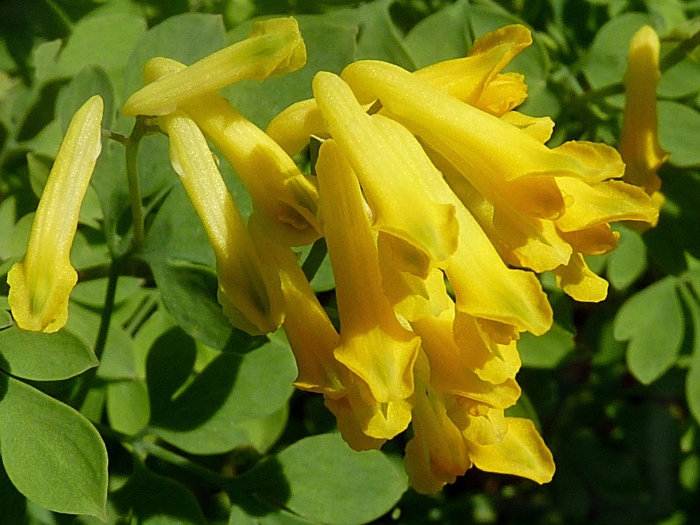Yellow Corydalis
(Pseudofumaria lutea)
Yellow Corydalis (Pseudofumaria lutea)
/
/

Jamain
CC BY-SA 3.0
Image By:
Jamain
Recorded By:
Copyright:
CC BY-SA 3.0
Copyright Notice:
Photo by: Jamain | License Type: CC BY-SA 3.0 | License URL: http://creativecommons.org/licenses/by-sa/3.0/ | Uploader: Jamain | Publisher: Wikimedia Commons |





















































Estimated Native Range
Summary
Pseudofumaria lutea, commonly known as Yellow Corydalis, is a deciduous perennial herb native to the rocky slopes and cliff faces of Southern Europe. It typically grows to a height and width of 1-2 feet. This plant is characterized by its delicate, fern-like bluish-green foliage and tubular, yellow flowers which bloom profusely from late spring to early fall, adding a long-lasting splash of color to garden spaces. The flowers are modest in size but can be quite showy due to their abundance.
Yellow Corydalis is valued for its ability to thrive in challenging garden spots, such as rockeries and alpine gardens, where other plants might struggle. It is also used to brighten up shaded areas and is often found growing in the crevices of walls or between paving stones, where it can naturalize. This plant prefers well-drained soils and can tolerate dry conditions once established, making it a low-maintenance option for gardeners. While it does best in part shade, it can also adapt to full sun in cooler climates. Yellow Corydalis is not known for serious pest or disease problems, but it can self-seed prolifically, which may be undesirable in some settings.CC BY-SA 4.0
Yellow Corydalis is valued for its ability to thrive in challenging garden spots, such as rockeries and alpine gardens, where other plants might struggle. It is also used to brighten up shaded areas and is often found growing in the crevices of walls or between paving stones, where it can naturalize. This plant prefers well-drained soils and can tolerate dry conditions once established, making it a low-maintenance option for gardeners. While it does best in part shade, it can also adapt to full sun in cooler climates. Yellow Corydalis is not known for serious pest or disease problems, but it can self-seed prolifically, which may be undesirable in some settings.CC BY-SA 4.0
Plant Description
- Plant Type: Herb
- Height: 1-2 feet
- Width: 1-2 feet
- Growth Rate: Moderate
- Flower Color: Yellow
- Flowering Season: Spring, Summer, Fall
- Leaf Retention: Deciduous
Growth Requirements
- Sun: Part Shade
- Water: Low
- Drainage: Fast
Common Uses
Bank Stabilization, Bee Garden, Deer Resistant, Drought Tolerant, Low Maintenance, Rock Garden, Showy Flowers, Street Planting
Natural Habitat
Rocky slopes and cliff faces of Southern Europe
Other Names
Common Names: Rock Fumewort, Gul Lærkespore, Gelbe Lerchensporn, Gelber Lerchensporn, Corydale Jaune, Gele Helmbloem, Gul Nunneört
Scientific Names: , Corydalis lutea, Pseudofumaria lutea, Fumaria lutea, Pseudo-fumaria lutea, Borckhausenia lutea, Capnoides albida, Capnoides lutea, Fumaria capnoides, Fumaria tetragona
GBIF Accepted Name: Pseudofumaria lutea (L.) Borkh.